Milky Way
Contents
Before we can begin to talk about our galaxy, the Milky Way, we need to understand the difference between a galaxy and a solar system. This is a distinction that many are unaware of and countless times have referred to our solar system by the name of our galaxy. To begin with, the Milky Way is massive compared to our solar system. The best analogy I have seen in comparing the size of our galaxy to our solar system was in Wikipedia, "if the Solar System out to Neptune were the size of a US quarter (25mm), the Milky Way would be approximately the size of the continental United States". That is a huge difference!
Our solar system only contains approximately 8 planets, 5 dwarf planets, a few thousand planetary objects and maybe a few billion stars that we have discovered so far. The Milky Way galaxy contains over 200 billion stars and 100 billion planetary objects and our solar system is merely a speck in it. So yes, there is a massive difference between our galaxy and our solar system.
Visual Idea of the Milky Way
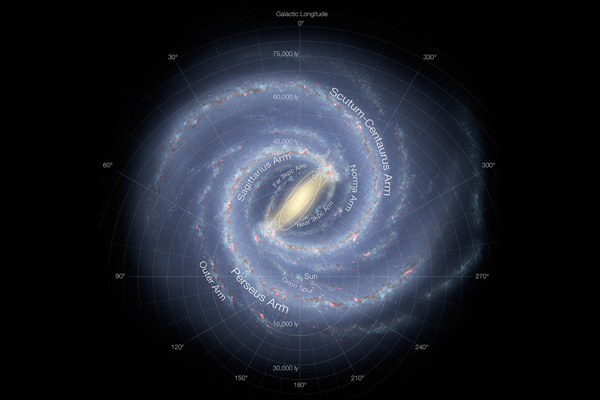 Artist's conception of the spiral structure of the Milky Way / eso.org
Artist's conception of the spiral structure of the Milky Way / eso.orgThe Milky Way is but one of the billions of galaxies in our universe. It is part of a cluster of galaxies called the Virgo Super Cluster, our nearest neighbor being the Andromeda galaxy. Which in turn is part of an even larger cluster of galaxies called the Laniakea. Our galaxy is the second largest galaxy in this cluster with a mass estimated at approximately 5.8 x 1011 solar masses or 100,000—120,000 light-years.
The way the Milky Way got its name is because of its "milky" appearance in the night sky. When viewed from Earth, we are able to see the center of our galaxy, which appears as a band of soft light stretched across the heavens. The name of the Milky Way is actually very ancient, ancient astronomers called our galaxy Milky Way when first viewing it because it resembled spilled milk. This name was found in the text that was translated into Latin from Greek, and rather than change it astronomers today adopted it. The best way to describe the appearance of our galaxy as a whole if viewed from space is to picture a hurricane image on the news. There is an "eye" in its center with cloudy arms extending in a spiral around the center. A multitude of celestial objects and debris speckle the cloud along with stars and comets.
There are 7 arms all together, starting from the closest to the furthest they are named Near 3kpc Arm, Far 3kpc Arm, Sagittarius Arm, Norma Arm, the Perseus Arm, Scutum-Centaurus Arm, and Outer Arm. In between these arms, close to the center are three smaller bands. From closest to furthest from the center; named Galactic Bar, Long Bar, and the Orion Spur. Our solar system is located in the Orion Spur between the Perseus Arm and the Sagittarius Arm approximately 27,000 light-years from this center. So basically our solar system is a small pebble in a much larger and complex ocean. Humbling isn't it?
Mystery In The Middle
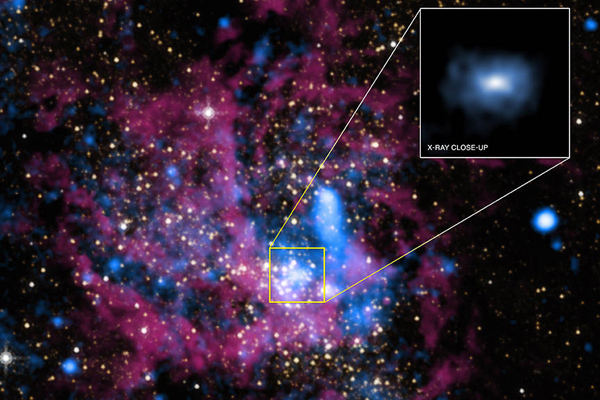 Supermassive Black Hole Sagittarius A* / harvard.edu
Supermassive Black Hole Sagittarius A* / harvard.eduAround its center, a thick gaseous cloud shields what is contained within, but scientists speculate that a super-massive black hole may be occupying the center region. This is due to an intense radio source, named Sagittarius A*, that is emitted from that area along with the motion of material around it suggesting a massive compact object is contained there.
What is a black hole? A black hole is a spot in space where the gravitational pull is so intense, not even light can escape it. As a result, we can't really see it. All our knowledge of black holes comes from the stars within their vicinity. They have a different behavior than that of other stars that are much further away from it.
Infrared images from the Spitzer Space Telescope (SST), which was launched in 2003, has shown us what we would otherwise be unable to see the center area. In this image, there are cooled stars which appear blue, heated dust particles which appear reddish, and Sagittarius A* appears as a bright white spot in the middle. However, until a mission to the center of our galaxy can be implemented, all we know is based on speculation with no concrete proof.
Composition of the Milky Way
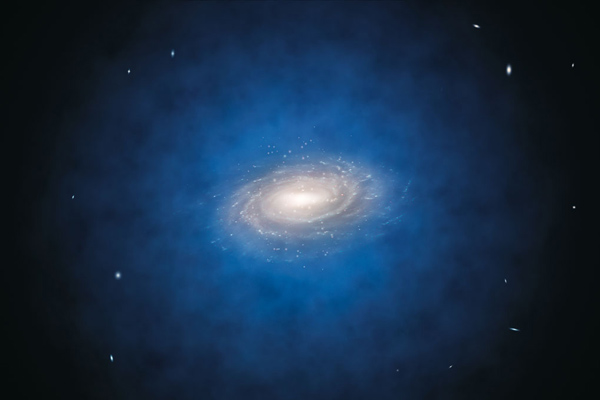 Artist's impression of the dark matter distribution around the Milky Way / eso.org
Artist's impression of the dark matter distribution around the Milky Way / eso.orgMuch of the mass of the Milky Way does not absorb electromagnetic radiation, which gives to the suggestion of another type of matter, called dark matter, in fact, exists. We are unable to detect dark matter, but because of various unexplained occurrences, such as the orbital speed of stars not correlating with their surrounding visible elements and the largely unaccountable mass difference compared to what is seen, dark matter is the only other explanation.
Dark energy and dark matter appear to be the main components of all aspects of the universe. What is comprised of or what exactly it has yet to be known, but there is strong evidence that it does exist. Dark matter appears to weigh more than the visible matter at about a 6 to 1 ratio and approximately 27% of the universe is believed to be composed of it.
In Motion
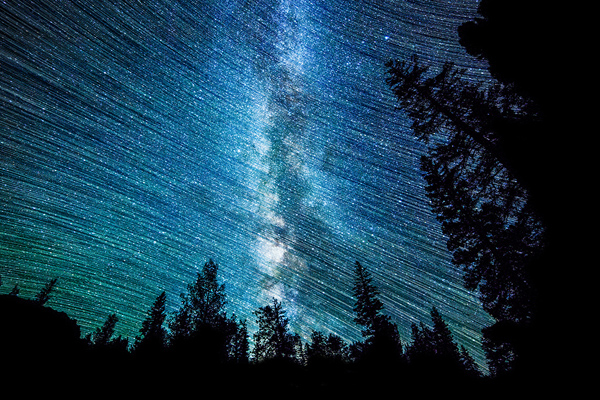 The Milky Way in Motion / flickr.com
The Milky Way in Motion / flickr.comThe Milky Way is moving at approximately 240 million years at a velocity of 600 km (372.8 miles) per second towards what is called the Great Attractor. The Great Attracter is a fixed point that all galaxies within the universe are being pulled towards. No one has any clue as to what this point is but evidence shows that we are steadily moving towards it. It could billions upon billions of years before our galaxy reaches this point, but it has scientists going crazy trying to find out what it is. Perhaps it is a super-massive black hole unlike anything that has ever been seen before or maybe even God, who is to know.
As much as we know about our galaxy, there is so much more we have yet to understand. Images created showing our galaxy are actually images of other galaxies or artist interpretation as to what they believe our galaxy would look like from above. But in order to truly see our galaxy and what it looks like, we would have to take images of it from another galaxy, such as our closest neighbor Andromeda. But as the ability to do so is still a long ways away, we are forced to accept the images we have available.
We have as of yet to scratch the surface of our solar system let alone our galaxy. The only thing we know for certain about our galaxy is that it is a complex system that is part of a larger system that is part of an even larger system, making our solar system but a small pebble in the ocean of a vast universe.
Video Gallery

-
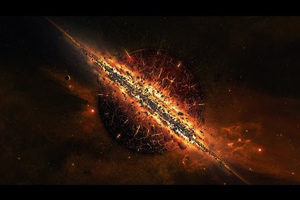 Explore The Milky Way Galaxy - Documentary HD
Explore The Milky Way Galaxy - Documentary HD
-
 The Milky Way: Crash Course Astronomy
The Milky Way: Crash Course Astronomy
-
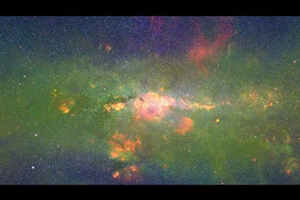 Floating Along the Milky Way in 4k
Floating Along the Milky Way in 4k
-
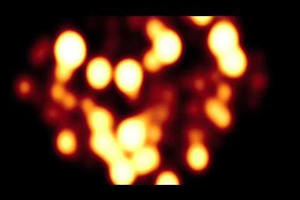 Supermassive Black Hole in the Milky Way Galaxy
Supermassive Black Hole in the Milky Way Galaxy